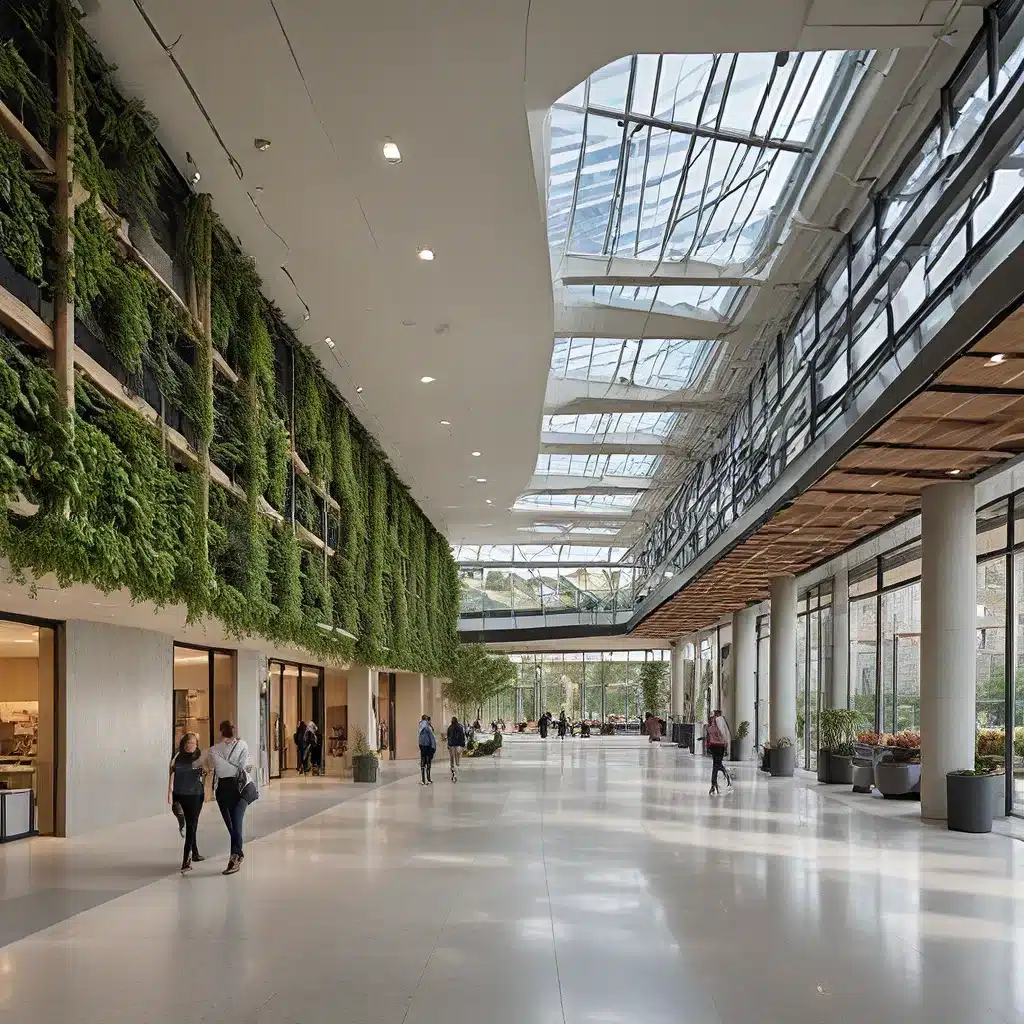
As someone passionate about the environment and sustainability, I’m thrilled to dive into the world of energy-efficient commercial buildings. It’s an exciting time in the industry, with innovative technologies and design approaches reshaping the way we construct and power our workspaces.
One of the pioneering frameworks leading this charge is LEED (Leadership in Energy and Environmental Design), the world’s most widely used green building rating system. LEED certification provides a comprehensive framework for creating healthy, highly efficient, and cost-saving green buildings that offer tremendous environmental, social, and governance (ESG) benefits. With over 197,000 LEED projects worldwide spanning 186 countries and territories, this global solution is transforming the built environment and paving the way for a more sustainable future.
The Power of LEED Certification
LEED is much more than just an eco-friendly label – it’s a holistic system that looks at the big picture, factoring in all the critical elements that work together to create the best possible building. From reducing global climate change and enhancing human health to protecting water resources and promoting sustainable material cycles, LEED tackles the multifaceted challenge of sustainability head-on.
In fact, a staggering 35 out of 100 LEED credits are directly related to climate change mitigation, 20 impact human health, 15 affect water resources, 10 influence biodiversity, 10 relate to the green economy, and 5 impact community and natural resources. LEED v4.1, the newest version of the rating system, places an even stronger emphasis on operational and embodied carbon – a crucial step in aligning the built environment with a low-carbon future.
The Business Case for LEED
But the benefits of LEED certification extend far beyond environmental impact. It’s also a smart business decision that can significantly boost a building’s bottom line. Studies have consistently shown that LEED-certified buildings have a higher resale value and lower operational costs than their non-LEED counterparts.
In fact, LEED-certified office spaces have consistently achieved higher rents, averaging 4.1% or $1.11 higher per square foot than non-LEED certified buildings. And during recession-recovery periods, LEED-certified assets have outperformed their non-LEED peers, with lower vacancies in the wake of the COVID-19 pandemic.
The pandemic has also accelerated tenant demand for ESG-aligned assets, with occupancy rates for LEED-certified buildings increasing from 90% to 92% since 2020, while non-LEED occupancy has fallen from 90% to 88% over the same period. LEED-certified buildings have also proven to be top-performing commercial real estate investments, fetching a 21.4% higher average market sales price per square foot compared to non-LEED buildings.
Healthier Spaces, Happier Occupants
But the benefits of LEED go beyond just the financial bottom line. These sustainable spaces also promote the well-being and productivity of their occupants. By focusing on strategies like banning smoking, reducing toxic exposure from materials, and incorporating active design and local sustainable food production, LEED-certified buildings create healthier, more satisfying indoor environments.
Employers in LEED-certified spaces report higher recruitment and retention rates and increased employee productivity. Improved indoor air quality can also reduce absenteeism and work hours affected by asthma, respiratory allergies, depression, and stress, leading to self-reported productivity improvements.
And the benefits extend beyond the building’s walls. Energy-efficient LEED buildings help reduce pollution and improve outdoor air quality in major industrialized areas, making LEED a critical tool in the fight against smog and other environmental challenges.
Designing for a Sustainable Future
So, how can you unlock the power of LEED certification and design an energy-efficient commercial building that cuts costs for you and your tenants? It all starts with a holistic approach that considers the entire lifecycle of the building, from construction and operations to maintenance and end-of-life.
One key strategy is to optimize the building’s envelope, focusing on features like high-performance windows, insulation, and air-sealing techniques to minimize energy demands. Incorporating renewable energy sources, such as solar power, can also significantly reduce the building’s carbon footprint and operating costs.
Intelligent building systems and controls play a crucial role in maintaining energy efficiency and occupant comfort. Leveraging data-driven insights and automation can help you fine-tune the building’s operations, identify areas for optimization, and respond quickly to changing conditions.
And don’t forget about the importance of sustainable material selection. By prioritizing low-embodied-carbon materials, recycled content, and products with environmental product declarations (EPDs), you can further enhance the building’s environmental performance and contribute to a more circular economy.
Embracing the Future of Sustainable Spaces
As we look to the future, the demand for energy-efficient, high-performing commercial buildings will only continue to grow. LEED certification has proven to be a reliable and impactful framework for creating sustainable spaces that benefit the environment, the occupants, and the bottom line.
By embracing the principles of LEED and incorporating the latest design strategies and technologies, you can future-proof your commercial buildings, attract and retain top-quality tenants, and contribute to a more sustainable world. It’s an exciting time to be in the industry, and the opportunities for innovation and impact are endless.
So, what are you waiting for? Let’s design the sustainable spaces of tomorrow, today!

